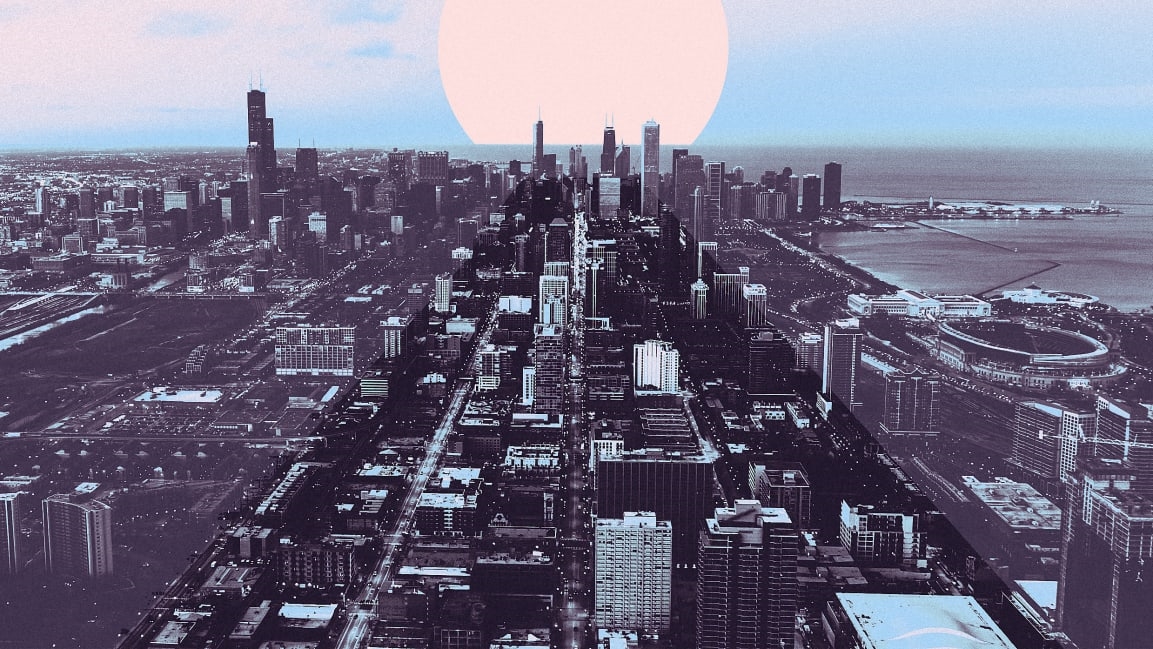Chicago’s COVID-19 recovery plan aims to go beyond the crisis to correct historical inequities
In April, the city of Chicago announced it had pulled together an economic recovery task force, divided into areas from policy to mental health to business, and composed of labor leaders, academics, advocacy organizations, city council members, and regional representatives from surrounding counties, to help the city overcome the coronavirus crisis. Now, they’re releasing a report that details guidelines for an inclusive economic revival that not only focuses on the immediate issues sparked by the COVID-19 pandemic but fixes wealth disparities and addresses racial inequities that have long existed.
Wealth disparities and racial inequities are a distressing problem across American cities, but for years, Chicago—America’s third-most-populous city—has been below the national average when it comes to these issues. Chicago’s middle class is “almost gone,” according to a local investigation, which found that the middle class only represented 16% of the population in 2019, down from 50% in 1970. In 2017, the median income of the average white household was $71,000, compared to $41,000 and $30,000 for Latino and Black households, respectively.
These are “old traumas” that plagued the Windy City long before the coronavirus crisis, but 2020’s challenges—the pandemic, the economic recession, and the civil uprising—have exposed them as urgent and “highlighted the existing structural inequity,” says Samir Mayekar, the city’s deputy mayor for economic and neighborhood development under Mayor Lori Lightfoot. Mayekar admits that these should have been addressed long ago, but, he says, the current circumstances provide “a unique moment here to capture that attention, and to really drive change.”
The report, which was written over 10 weeks and bolstered by resident surveys, focus groups, and a youth summit, has 17 recommendations to be implemented in phases between now and 2023 and beyond. The concepts include broad, ambitious ideas such as expanding economic opportunity and financial security, increasing ownership and employment for Black and brown communities in the area’s contracting and construction industry, creating a vibrant minority business community, and strengthening the social safety net for workers. There are also more specific recommendations, such as preparing the city to host corporate HQ2s, and bringing film and TV opportunities to Chicago. All are detailed with multiple steps, and through a lens of “[circulating] prosperity within communities of color,” a focus which became sharper after the killing of George Floyd.
The task force that put together this report is wide-ranging, and Mayekar marvels at the consensus that’s evolved between its different participants, from Fortune 100 company executives to worker advocacy groups. “They are aligned on the vision and mission of where we need to go,” he says.
For Mayekar, a particularly striking sign that this may truly be a moment of turning tides is the buy-in from large corporations, which are represented in the task force by executives from the Bank of Montreal, Target, Blue Cross Blue Shield, and other big companies. He says they are now recognizing that the pre-COVID-19 economic trajectory was not sustainable, and that “equitable and inclusive growth is vital for their long-term interests, as well.”
But brands have made many declarations of support in the wake of the pandemic and recent anti-racism protests, and statements are not the same as action. When asked about holding corporations accountable for their dedication to these promises, Mayekar admits there needs to be a sustained cultural change within those corporations, and he envisions an increase in shareholder activism to bring that about. Still, he realizes that the majority of the leadership and accountability burden rests on the city, which will be holding quarterly progress meetings with the task force to discuss updates and strategize on the implementation of the goals.
Other recovery work will focus on increasing access to mental and emotional health care, another area that has been exacerbated by the coronavirus crisis; working with 400 mayors in Chicagoland, the greater Chicago region, to benefit the 10 million residents of that collective area and not just the city itself; and creating the ultimate marketing “brand” for Chicago, so that it’s recognized on the world stage as a place for investment and tourism.
One investment area in particular will be in long-ignored Woodlawn, the Southside site of the new $500 million Barack Obama Presidential Center, where the city plans to set aside public land for affordable housing. Again, the city will be accountable for ensuring that the threat of gentrification does not displace existing residents and once more forget the long-forgotten. “Certainly, under this mayoral leadership, we’re not going to let that happen,” Mayekar pledges.
The city also vows to reinforce social safety nets for laborers, from those in traditional roles to temporary and gig workers. The task force will institute pilot programs for portable benefits, which protect 1099 workers rather than the companies they contract for. “Chicago is the birthplace of the labor movement,” Mayekar says, “and I do think that we can be the birthplace of these new protections for the evolving workforce.” Effective change such as this needs support from legislators, who can levy the city’s funding; that’s why 17 aldermen, or city council members, are present on the committee.
Chicago will continue to work separately on combating the virus and reopening the city in the short term. But Mayekar says this long-term vision is vital and could prove a good model for cities nationwide. He’ll be presenting the report next week to his counterparts across the country and hopes they’ll bring some of Chicago’s initiatives back to their hometowns. That local effort could be especially important now, he says, due to the “pretty significant leadership void and vacuum on the federal level.”
(47)



